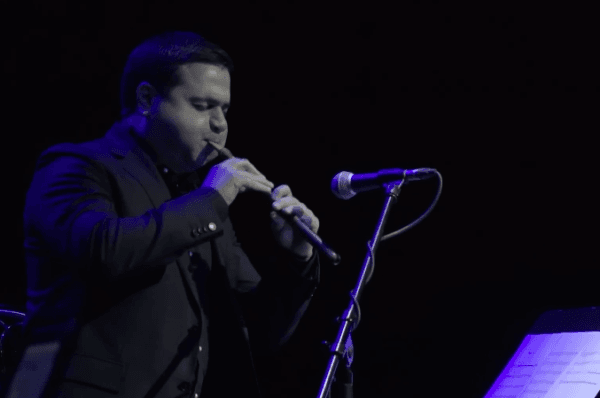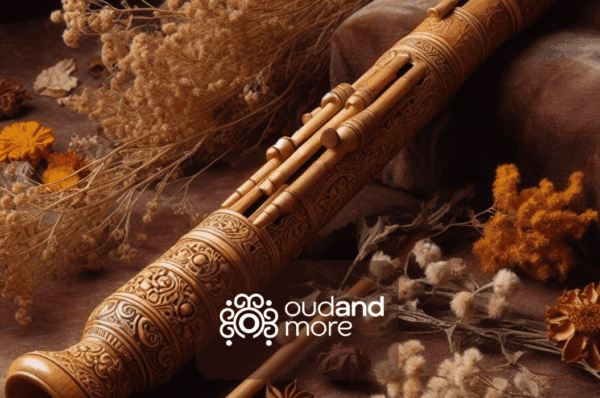In our previous articles, we provided information about the history and cultural structure of the oud. In today’s piece, we will discuss the place of fusion music and the oud.
Fusion music represents a blend of different musical styles, traditions, and genres to create something innovative and unique. This musical genre draws from a diverse array of influences, combining elements from various cultures and musical traditions to form new, often unexpected sounds. Fusion music is characterized by its diversity, creativity, and ability to bridge the gap between disparate musical worlds.
Characteristics of Fusion Music
- Diversity: Fusion music incorporates elements from different musical genres and cultures. For instance, it may merge jazz with rock, classical with electronic music, or traditional folk with contemporary pop.
- Innovation: The genre is marked by its experimental nature and emphasis on innovation. Fusion music often breaks conventional rules and explores new soundscapes, encouraging musicians to think outside the box.
- Instrumental Variety: A hallmark of fusion music is the use of a wide range of instruments. Traditional instruments are often paired with modern ones, creating intriguing and eclectic sound combinations.
- Rhythmic and Melodic Complexity: Fusion music frequently features complex rhythms and melodies, drawing from various cultural traditions. This complexity adds richness and depth to the music.

Types of Fusion Music
Fusion music spans a wide spectrum of styles, each blending different elements to create a unique sound. Some notable types of fusion music include:
- Jazz Fusion: Emerging in the late 1960s and 1970s, jazz fusion combines jazz with elements of rock, funk, and R&B. Pioneers like Miles Davis, Herbie Hancock, and Weather Report were instrumental in shaping this genre.
- World Music Fusion: This type of fusion blends ethnic music traditions from around the world with contemporary genres. It might mix African rhythms, Indian classical music, Latin beats, and Middle Eastern melodies with Western pop or electronic music. Artists like Anoushka Shankar and Youssou N’Dour have excelled in this domain.
- Latin Rock: Combining Latin American music traditions with rock, this genre has been popularized by bands like Santana, who infuse rock music with Latin rhythms and instrumentation.
- Electronic Fusion: This genre blends electronic music with various other styles, such as jazz, classical, or world music. Electronic fusion often features DJs and producers who incorporate digital sounds and effects to create innovative tracks. Artists like Thievery Corporation and Bonobo are known for their contributions to this genre.

The Role and Importance of the Oud in Fusion Music
The oud, a traditional Middle Eastern stringed instrument, has found a significant place in fusion music. Its rich, resonant sound provides a unique texture that blends well with both traditional and modern musical elements. The oud’s versatility makes it an ideal instrument for fusion music, allowing musicians to explore new sonic landscapes.
The Oud’s Integration into Various Fusion Genres
- Jazz Fusion: The oud has been effectively incorporated into jazz fusion, where its melodic and harmonic capabilities complement the improvisational nature of jazz. Artists like Rabih Abou-Khalil have been pioneers in integrating the oud into jazz contexts, creating a distinct and innovative sound.
- Electronic Fusion: In electronic music, the oud adds an organic and acoustic element that contrasts beautifully with synthetic sounds. Musicians like Dhafer Youssef have successfully blended the oud with electronic music, creating atmospheric and ambient tracks that are both modern and deeply rooted in tradition.
- World Music Fusion: The oud plays a prominent role in world music fusion, where it is combined with instruments and musical styles from different cultures. This genre often sees the oud paired with African drums, Indian sitars, or Latin percussion, resulting in a rich tapestry of global sounds.
Examples and Usage in Fusion Music
Rabih Abou-Khalil: A Lebanese oud player and composer, Abou-Khalil has been a leading figure in jazz fusion. His music blends traditional Middle Eastern melodies with jazz improvisation and Western classical influences, creating a unique and compelling sound.

Dhafer Youssef: A Tunisian oud player and vocalist, Youssef is known for his innovative use of the oud in electronic and ambient music. His albums often feature the oud alongside electronic beats and effects, producing a mesmerizing fusion of old and new.

Anouar Brahem: A Tunisian oud virtuoso, Brahem seamlessly blends the oud with jazz and classical music. His work exemplifies the potential of the oud in creating sophisticated and emotive fusion music.

Cultural and Historical Significance
Fusion music, including the use of the oud, serves as a bridge between cultures, promoting understanding and appreciation of diverse musical traditions. It allows for the preservation and evolution of traditional music while fostering creativity and innovation. The oud, with its deep historical roots and rich tonal quality, adds a unique dimension to fusion music, enriching the genre and expanding its possibilities.
Fusion music is a dynamic and evolving genre that celebrates diversity and innovation. By blending different musical styles and traditions, it creates new and exciting soundscapes that push the boundaries of conventional music. The oud, with its historical significance and versatile sound, plays a crucial role in this genre, exemplifying the power of music to connect cultures and inspire creativity. Through fusion music, traditional instruments like the oud find new life and relevance, contributing to the rich and varied tapestry of contemporary music.




